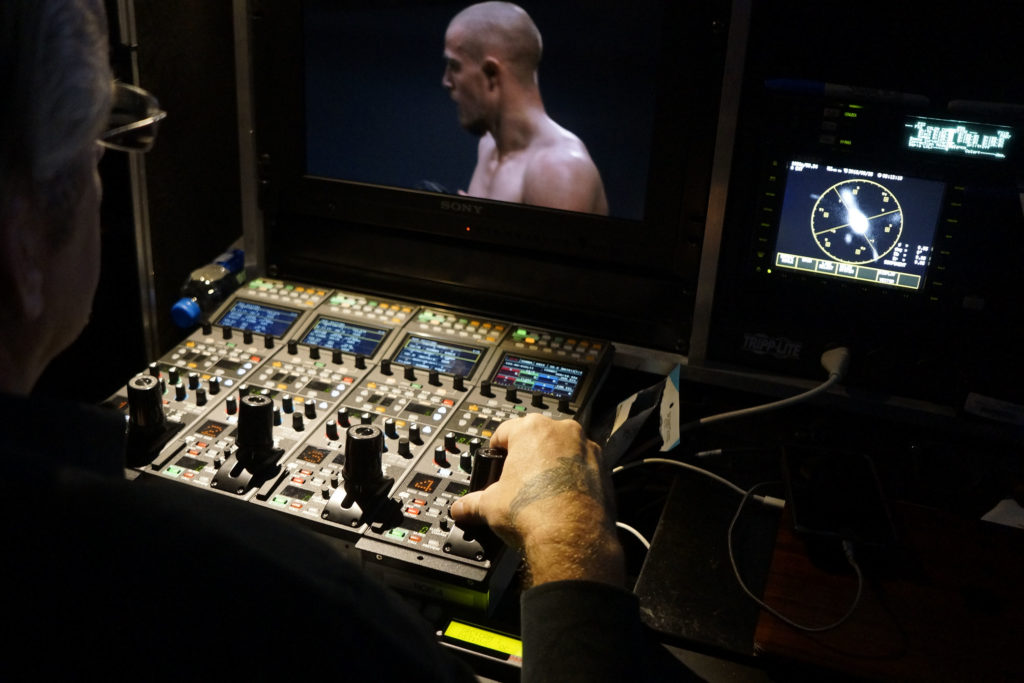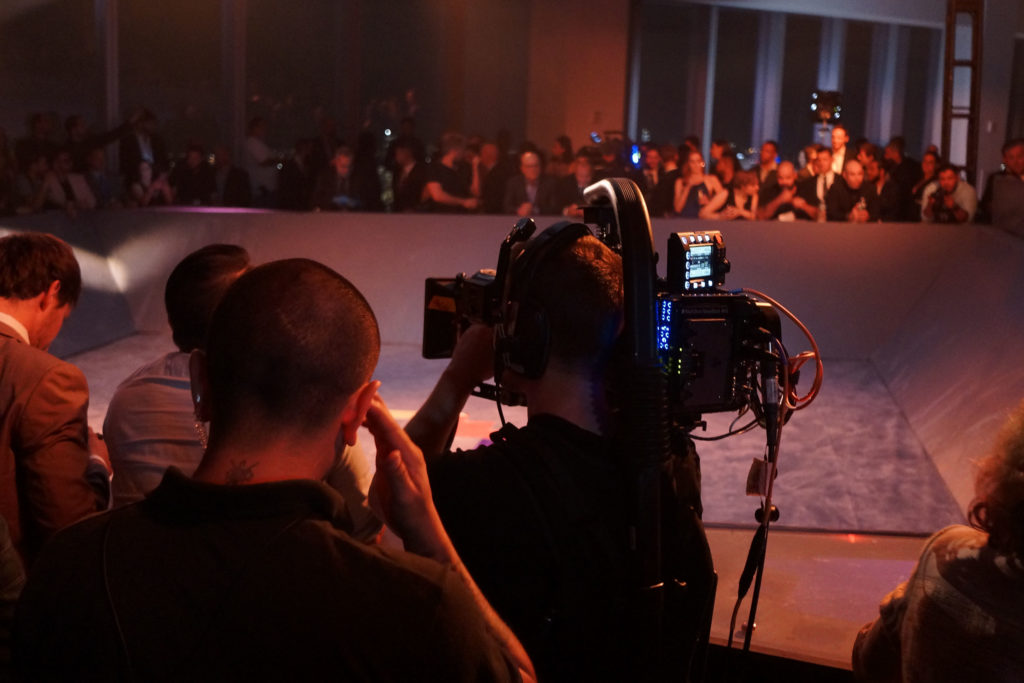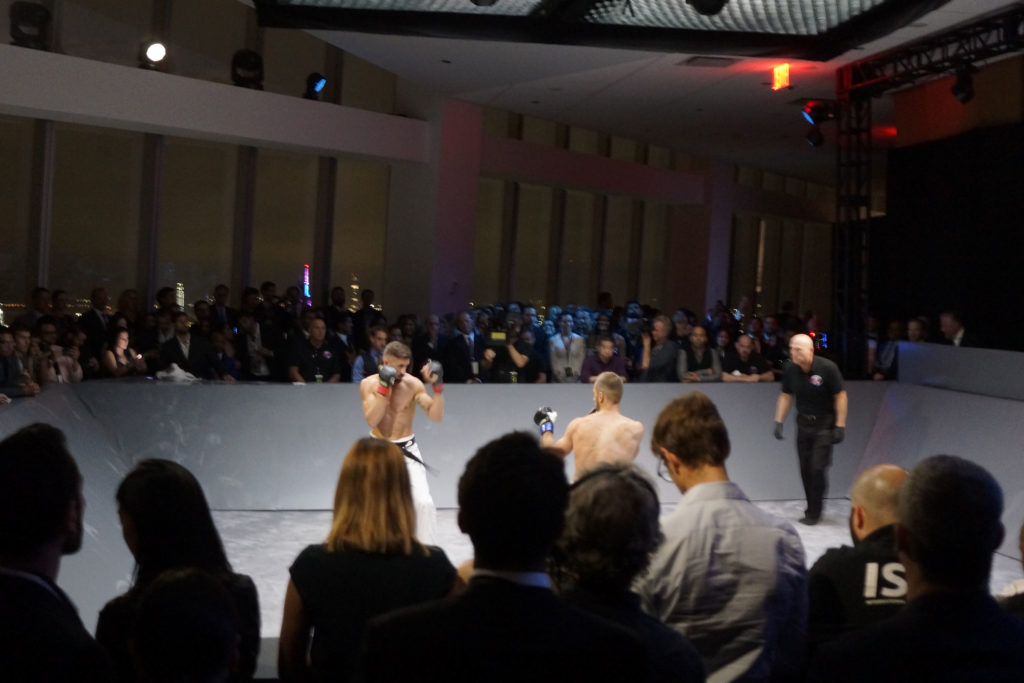April 11, 2020
5 min read
Karate Combat was founded to promote the sport of Karate worldwide by creating the first professional, full-contact league. Held on the 102nd floor Observation Deck of New York City’s One World Trade Center, Karate Combat: One World was broadcast live through Karate Combat’s website, www.Karate.com. The sports event was shot by cinematographer Greg Wilson with support from TV Tech Managers on Panasonic VariCam LTs set up for CineLive. The VariCam LT enables broadcast shading and multi-camera control plus tally and return video management to the cinema camera. This allows a production to create a cinematic look with excellent low-light performance for live and near-live productions.
For Karate Combat: One World, TV Tech Managers were tasked with providing technical services to the production. With initial conversations coming from line producer, Rob Cooper and VER, they wanted to improve upon previous versions of the event. “They’ve done this event around the world using various cameras, trucks, fly packs and workflow,” says Brett Dicus, Tech Manager, TV Tech Managers. “TV Tech managers were given the opportunity to provide a turn key version of what the production has done in the past.”

Panasonic VariCam LTs set up for CineLive were used to shoot Karate Combat: One World. (All photos courtesy of TV Tech Managers)
The Challenge
According to Dicus, the production had several challenges. The first obstacle is that Karate Combat: One World is a sports show with a sports truck workflow, that now needs to take place on the 102nd floor of the One World Trade Center. The workflow includes features like playback, slo-mo replays, and animated graphics - all the normal broadcast challenges that are typically provided by a sports truck. “Since we were on the 102nd floor, we couldn’t do a cable run down the side of the building 1776 feet down, or through a stairwell,” explains TV Tech Managers Shader JM Hurley. “We basically had to build truck facilities with a fly pack solution that could be installed quickly on that floor to support a sports workflow.”
The second challenge was that the producers wanted to see the New York City skyline in the background, which presented challenges with window reflection, light levels, and angles in composing shots. After consulting with Wilson, they knew they had to shoot at a higher ISO, so Wilson pushed for the VariCam LT with CineLive to accomplish this. Since the windows were tinted, the ability to use the VariCam LT’s native 5000 ISO setting was essential. To control the cameras, the team used Panasonic AK-HRP1000 remote operation panels connected with Ethernet via Multidynes. “We wanted to go above and beyond on what we had access to in the sports workflow and go with a larger sensor cinema camera that looks good at these high ISOs,” says Dicus. The other advantage was to be able to record in VLOG and perform a live “shade” of the Rec.709 output.

To control the VariCam LTs, TV Tech Managers used Panasonic AK-HRP1000 remote operation panels connected via Ethernet.
CineLive Workflow
Normally, TV Tech Managers would bring a 4K signal back to the control room, or back to the fly pack for back up recordings. For the broadcast, 4K was not required since they were streaming in full HD (1920x1080). “We were simply doing a 4K acquisition (10-bit 4:2:2 AVC Intra at UHD 3840x2160) for the archive and post workflow,” reveals Dicus. “However, we did shoot at a higher frame rate of 59.94 to accommodate slo-mo replay. Part of this jigsaw puzzle was to get a camera that had the high ISO sensitivity that could still output a 3G 1080p 59.94 signal.”
The camera output 1080p 59.94 via the VariCam LT’s SDI output into a Multidyne Silverback, which would then feed the control room. “We chose the Multidyne system because of the single SMPTE fiber cable run from the camera to the control room.” explains Dicus. “The Multidyne system provides many bi-directional video and audio paths such as timecode to the camera, as well as audio to and from the camera.”

The VariCam LTs output 1080p 59.94 via SDI output into a Multidyne Silverback, which would feed footage back to the control room.
The Multidyne offers several video paths to the control room so production can take both the clean view and character view (viewfinder output) feeds from the camera. The character view is for the control room to view key character data of record tally, iris position, record time remaining, audio metering, and more. Also, some cameras had two monitors on them – one monitor was used as the viewfinder, and the other one was the line cut so that the operators could see what the other cameras were doing.
The production used four VariCam LT CineLive set-ups. The master shot, or Camera One, was a camera on a jib arm on 15 – 18 feet of dolly track, that would give them a high and wide angle looking down on the fighters. Camera Two was on a Steadicam, which was the mobile camera that performed all walks from the locker room to the ring, as well as shots of the interviews between the host and the fighters. Cameras Three and Four were handheld on Easyrigs capturing close-ups and other ringside shots. There was also an ENG camera floating around the location capturing b-roll and locker room scenes.
For lenses, the team went with Fujinon Cabrio PL-mount lenses (20 – 120mm T.35 and 14-35mm T2.0 zooms) based on their ease of integration for lens and iris control. “Cabrios gave us the built-in functionality that we had access to based on the HRP1000s,” says Dicus. “That integration is what we are typically looking for in a broadcast set-up, where lens control data can travel through the data channels through to the camera, versus having external 3rd party hardware. It’s a minimal integration for controlling the lens and the camera from one central device that we used on this job.”

The producers wanted to see the New York City skyline in the background, which was a challenge that the VariCam LT's 5000 ISO was able to solve when working at lower light levels.
Why CineLive?
Besides the ability to shoot in low light to capture the New York City skyline, the other reason CineLive was chosen was its ability to capture shallow depth of field with the VariCam’s Super 35mm sensor. “They desired to shoot this in 23.98, however the EVS does not support 23.98 for our slo-mo replays and all of our playback,” says Dicus. “We honored the desired the cinema look by choosing a camera with a larger sensor but decided on a higher frame rate of 1080p 59.94 instead of 23.98, to accommodate the slo-mo replay.”
For TV Tech Managers, it was their first time integrating the ROP over Ethernet to control the VariCam camera, with the recently released access to all the controllable parameters they needed. “Now that it’s been added to the workflow, it’s certainly a new frontier that will allow us to consider VariCams more often,” says Dicus. “This kind of remote control and remote monitoring, and access to the camera is something we have to solve for every project. We’re now able to achieve that with very few extra parts. It’s something we’ve been waiting for and it’s finally here, and we’re very excited about it. I will likely encourage my clients to choose the ROPs and the VariCam LTs more often because it gives us the remote access that we’ve desired to have with this camera.”
Highlights from Karate Combat at One World
For more information on CineLive and the VariCam LT, click through here.
![]()
